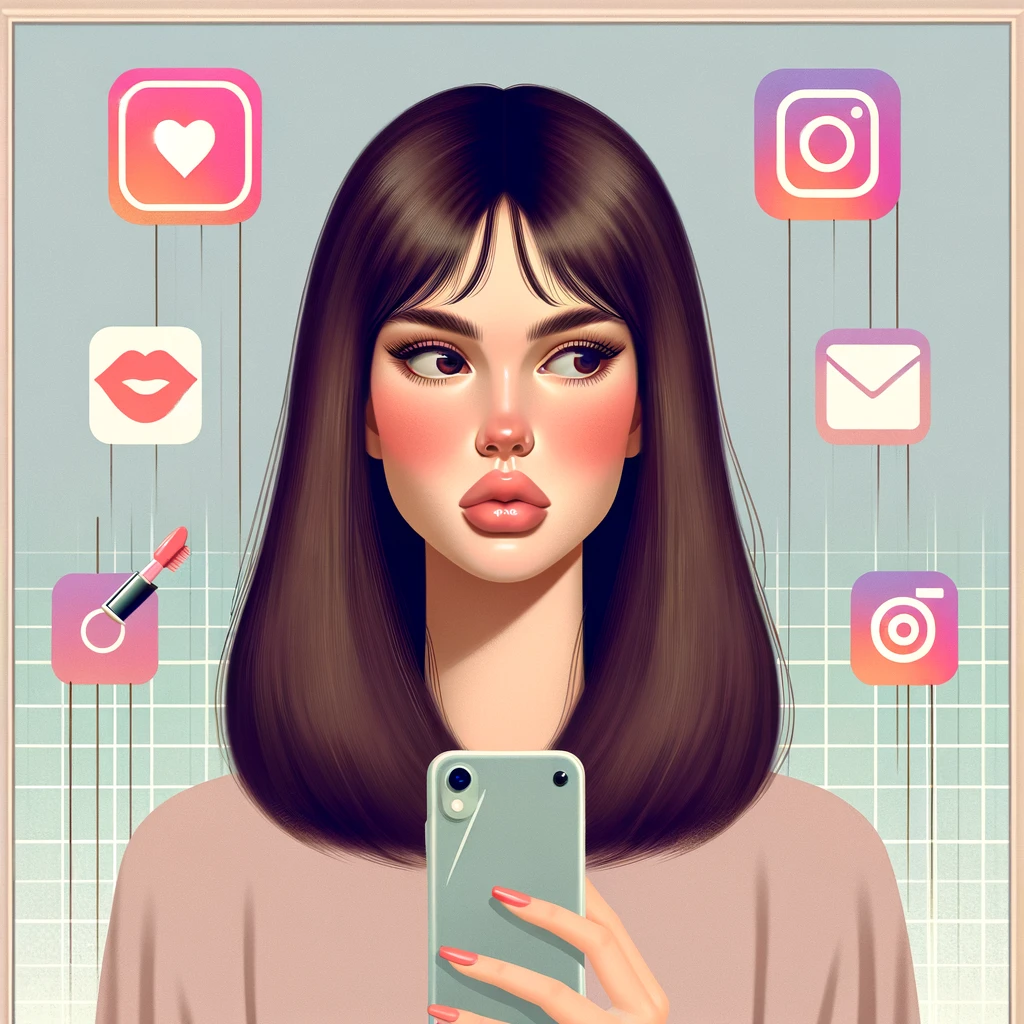New Trend: What's Behind Pillow Face Aesthetics
The world of beauty is constantly changing.
New aesthetics emerge every season.
But few have attracted as much attention recently as the Pillow Face Aesthetic.
This trend went viral on social media, especially among celebrities and digital influencers.
But after all, what is this pillow face thing?
Why is he generating so much buzz?
And most importantly: is it cute or over the top?
In this article, we will explore in depth this new craze in the world of facial aesthetics.
Get ready to discover what’s behind this trend that divides opinions.
What is Pillow Face Aesthetic?
The term “pillow face” can be translated as “pillow face”.
It refers to the puffy, stretched, and slightly puffy appearance of the face caused by excess facial fillers.
The cheeks, chin and periorbital region (around the eyes) tend to be more prominent.
The intention is to create a youthful look, with rounded contours and taut skin.
But when overdone, the result can look artificial, inflated and lacking in expression.
The term gained traction in the United States, where plastic surgeons and influencers began using it to describe this aesthetic phenomenon.
How did this trend come about?
The pillow face aesthetic didn’t come out of nowhere.
It is a direct result of the popularization of minimally invasive procedures.
Among them, the use of fillers with hyaluronic acid has become common.
Digital influencers, celebrities and ordinary users started to search for the “perfect face”.
Social networks like Instagram and TikTok have fueled this movement.
Digital filters, which soften features and enlarge eyes and lips, have also influenced the perception of beauty.
From then on, many people tried to replicate the filtered look in real life.
As a result, the demand for fillers has increased.
And with it came the exaggerations.
Celebrities and the impact on social media
Names like Madonna, Chrissy Teigen, Khloé Kardashian and other celebrities were pointed out as examples of the “pillow face”.
Some of them admitted to using fillers.
Others denied it.
But the discussion was underway.
Before and after photo comparisons went viral.
Experts and internet users began to debate: how far will the search for youth go?
Pillow face became a meme.
But it has also become a serious issue among dermatologists and beauty professionals.
What procedures cause pillow face?
Several types of facial fillers can result in the pillow face effect:
- Malar filler (cheeks)
- Jaw contour
- Very voluminous lips
- Sharp jawline
- Overfilled under-eye area
The main culprit is hyaluronic acid, a safe substance when applied correctly.
The problem occurs when there is excess product or application in inappropriate areas.
This can distort the features and create a bloated look.
Poorly trained professionals or procedures performed in unauthorized locations increase this risk.
Why did pillow face go viral?
The combination of celebrities, social media and digital filters created the perfect environment for the pillow face boom.
People began to seek an unattainable ideal of beauty.
They want to look forever young.
They want smooth, symmetrical, voluminous faces free of imperfections.
And with that, the aesthetics market grows exponentially.
But there are also warnings about the risks of exaggeration.
The dangers and exaggerations of pillow face
When done in excess, facial fillers can:
- Compromise the natural expression of the face
- Make the look artificial
- Generate psychological rejections
- Lead to more invasive corrective procedures
Pillow face is a symptom of a society obsessed with youth.
It is also a reflection of the pressure that social media imposes.
The quest for likes and approval feeds the cycle.
Criticism of the “pillow face” beauty concept
Many experts criticize the aesthetics of the pillow face.
They advocate a return to naturalness.
It is common to see celebrities removing fillers and adopting more realistic features.
The “less is more” trend is gaining momentum.
Being authentic is becoming more valued than appearing perfect.
And that could be a sign of change.
How to identify a pillow face?
Some signs are classic:
- Excessively rounded cheeks
- projecting chin
- Lips too large in relation to the face
- Lack of facial expression
- “Stretched” or puffy look
If these elements are present together, there is a good chance that it is a case of pillow face.
Is the pillow face aesthetic a passing trend?
Some say yes.
Others believe that it will still evolve.
The fact is that the concept of beauty is always changing.
What is beautiful today may be rejected tomorrow.
The history of fashion and aesthetics is full of examples of this.
Pillow face may be remembered as an excess of an era obsessed with appearances.
Or it can adapt and soften over time.
The search for balance
More important than following a trend is finding balance.
Aesthetic procedures must value individuality.
Beauty is in the details, in the expression, in the story that the face tells.
Striving for a better version of yourself doesn’t have to mean erasing unique traits.
The Role of Self-Esteem in the Age of Social Media
In a digital world where images are shared every second, the way we see ourselves has changed.
Self-esteem, once built on real experiences and direct social interactions, is now deeply affected by likes, comments and filters.
The culture of the “perfect selfie” has raised aesthetic standards to almost unattainable levels.
For many, procedures like those that create the pillow face are seen as quick fixes for self-image problems.
But this path, although tempting, can generate more frustration than lasting satisfaction.
The emotional dependence on digital validation turns beauty into a cycle of corrections and retouches.
True self-esteem, however, comes from self-knowledge and acceptance.
Celebrating your uniqueness can be a revolutionary act in a world where everyone wants to look the same.
Influence of Digital Filters on Aesthetic Behavior
Beauty filters are popular tools on apps like Instagram, TikTok, and Snapchat.
They enhance the skin, slim the nose, enlarge the lips and even change the shape of the face.
And all this in seconds.
The problem is when users start to see themselves only through these filters.
This phenomenon, known as “filter dysmorphia,” is being studied by psychologists around the world.
Dissatisfaction with real appearance grows.
And many resort to aesthetics to look like their filtered versions.
Pillow face appears exactly in this context.
It is the materialization of a digital version of beauty.
But in trying to achieve an artificial ideal, many lose their facial identity.
How to Choose a Professional and Avoid the Pillow Face Effect
Prevention is always better than cure.
And when we talk about facial aesthetics, this is even truer.
Choosing a qualified professional is essential to avoid artificial results and the infamous pillow face.
Before any procedure, it is essential:
- Check the professional's training and certification
- Ask for referrals and evaluate previous results
- Perform a detailed consultation
- Understand the risks and limitations of treatment
Often times, less is more.
Well-made aesthetics should enhance natural features.
It should be almost imperceptible to other people's eyes.
And above all, it must make sense to those going through the process.
Excess is the main enemy of harmony.
Conclusion: what have we learned from pillow face?
The pillow face aesthetic has exposed an important issue:
Are we looking for beauty or standardization?
Social media has accelerated this process.
But they also gave us a voice to question.
Today, the tendency is to reflect more before following trends.
And this could be a sign of collective maturity.
👉 Want to know more about facial aesthetics and other viral trends?
Explore our other articles and share this content on social media!
Who knows, maybe you can help someone rethink their relationship with beauty.













